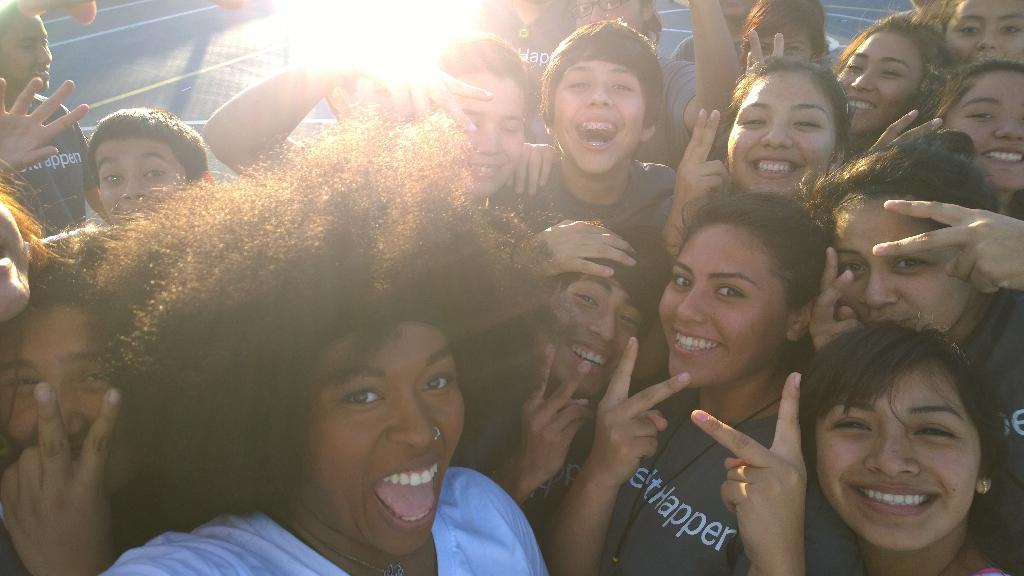Disclosure: This is a post written in conjunction with the American Council on Exercise, otherwise known as ACE, to bring attention to helpful resources for those interested in becoming personal trainers. As always, my experiences, my text, and my opinions are my own.
When I first decided that I wanted to become a personal trainer, the decision was clear for me – I wanted to be able to help people, but I wanted to be properly equipped with the right tools to do it.
In fact, many of you remember – I crowd-funded what I needed to pay for my certifications (because I was a broke newlywed who’d just moved to NYC, fun times), and sure enough, so many of you came through for me. I had the money I needed for my certification in less than a week’s worth of time.
That knowledge that I acquired from the certification process paid off handsomely. I’m able to think differently about assessing the abilities of the people who come to me for advice and assistance; I’m able to be a more effective coach because assessing one’s abilities means I’m able to give more targeted advice; and the ability to better target the needs of each person who comes to me for insight means I’m far more effective, more reliable, and more essential to helping those who come to me for insight actually achieve their goals, be they in weight loss or fitness in general.
Becoming certified as a trainer has also shifted the way I understand fitness – my weight loss journey was exclusive to my body, my needs, and only the needs I had at any given time. Developing a better understanding of anatomy has not only made me more competent when talking about the human body, it’s helped me in terms of what I write here and how clearly I can express an idea. If I don’t know an idea, I know the path I should take to find the information necessary. Certification gave me additional resources – textbooks, conferences, panels, hands-on training and guidance – having access to all of these things makes, and actually taking advantage of them and taking them seriously, makes me infinitely more knowledgeable.
I spent 2012 studying and preparing for my first exam. I spent 2013 working on three more certifications. And then, I spent 2014 traveling, each month, to a new conference. Can we say, “overdoing it?” Yes we can! However, ask anyone who has worked with me in 2014, and they’ll tell you – there wasn’t a single question that the everyday fitness-minded person could ask me that I didn’t have the answer to. And there wasn’t a single time that I had to give an answer that was so jargon-centered that the person walked away wishing they’d never asked to begin with.
I mean, for crying out loud… remember “lumbar lordosis?” Seriously.
As a certified personal trainer, I serve as that connection between people and the information they need to know to be more active in a safe and personalized manner, and the certification process taught me what it means and what it looks like to take that responsibility seriously. That’s why I’m not only an advocate for certification, I encourage people to invest in their knowledge inside and outside of traditional means. Learning inside traditional means teaches you the rules and the guidelines; learning outside, however, helps you understand how to individualize and create your own business plan.
Looking through the American Council of Exercise (also known as ACE) Career Guide they’ve created specifically for personal trainers will tell you a lot about the industry – with the average income being upwards of $50,000 USD for full time trainers, especially in modern times where more people are being fitness-minded, there is opportunity in the field to help people earn independently. In fact, the Career Guide they’ve created tells you a lot about the industry, well beyond just talking about money.
The guide shares with you tons of different paths one can take as a personal trainer – clinically-based training, working with those who have injuries or medical conditions that require partnerships with hospitals or physical therapists; in-home or online training, which provides clients with the flexibility they need to still achieve their goals whether or not they’re able to do so within regular working hours; and more. The guide can help expand the way you look at the industry, the certification process can expand the way you look at training as a whole, and traveling and taking master classes can expand how you look at the particular niche you desire to serve. I wish this thing existed when I first started out – it would’ve changed the way I originally looked at what I do. (I also likely would’ve been making far more money in the beginning, as well.)
Becoming certified really changed my life – it gave me extended credibility, it taught me how to understand the people in front of me and better assess their needs, and it showed me how to better serve my clients. If you’re curious about the industry at all, check out ACE’s Personal Trainer Career Guide and see if it’s the right move for you. ACE also offers certifications that will help you develop the knowledge you need to become the best trainer you can be, so check those out, as well. And, as always, if you have any questions, hit me up in the comments below!
This is a sponsored conversation written by me on behalf of American Council on Exercise. The opinions and text are all mine.

